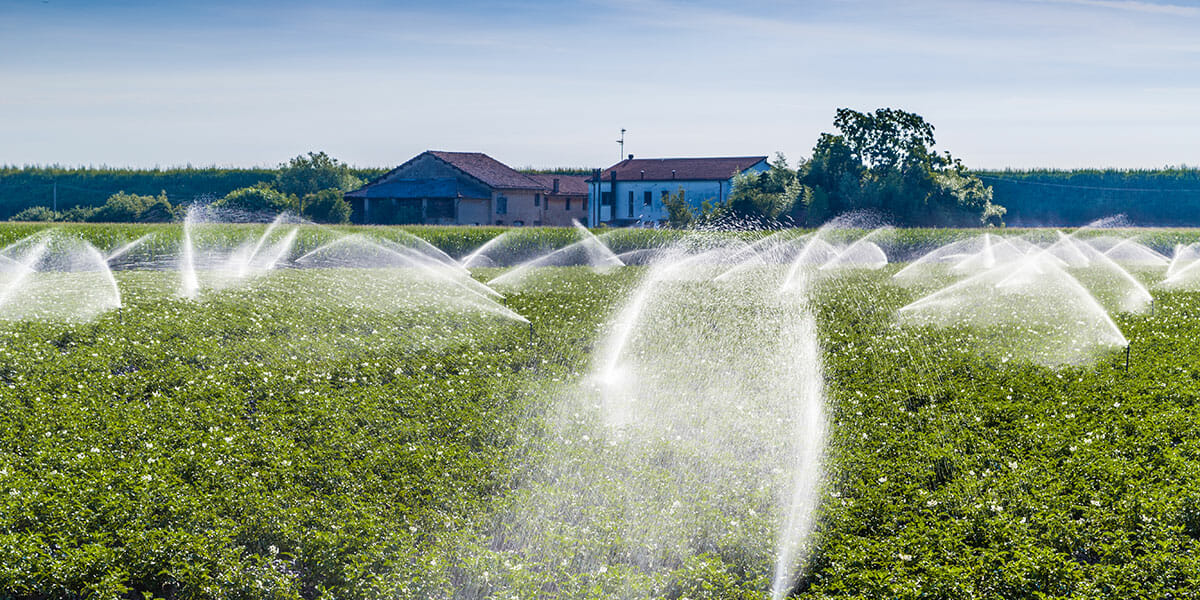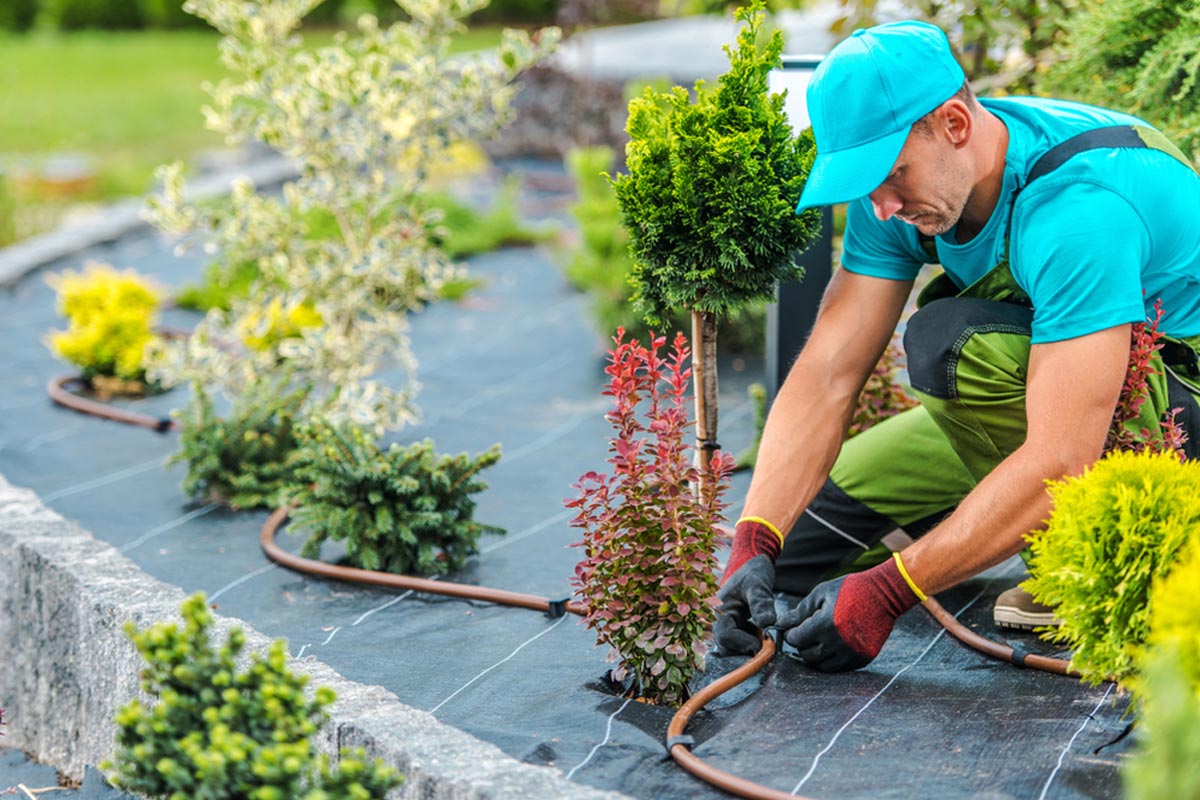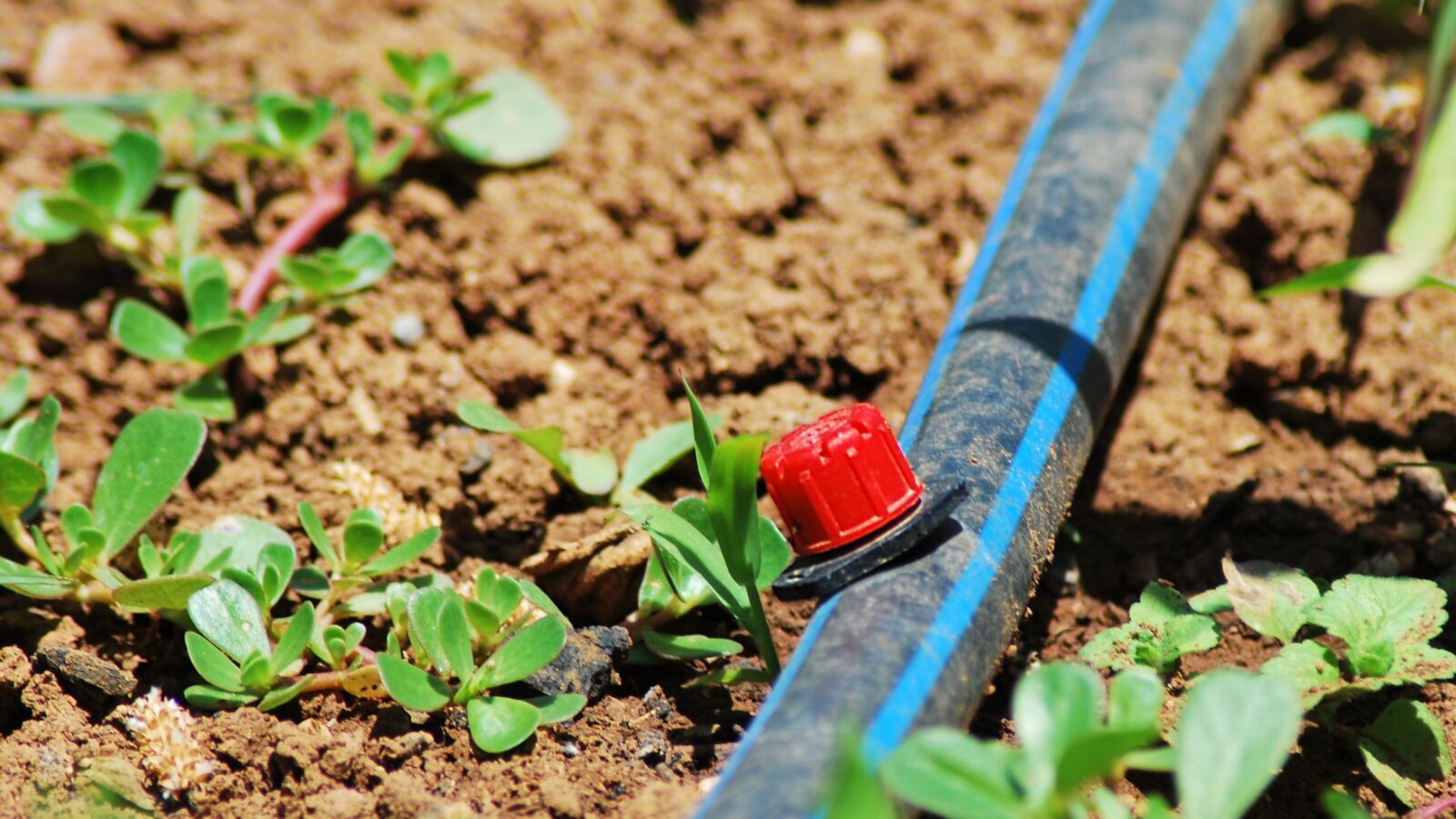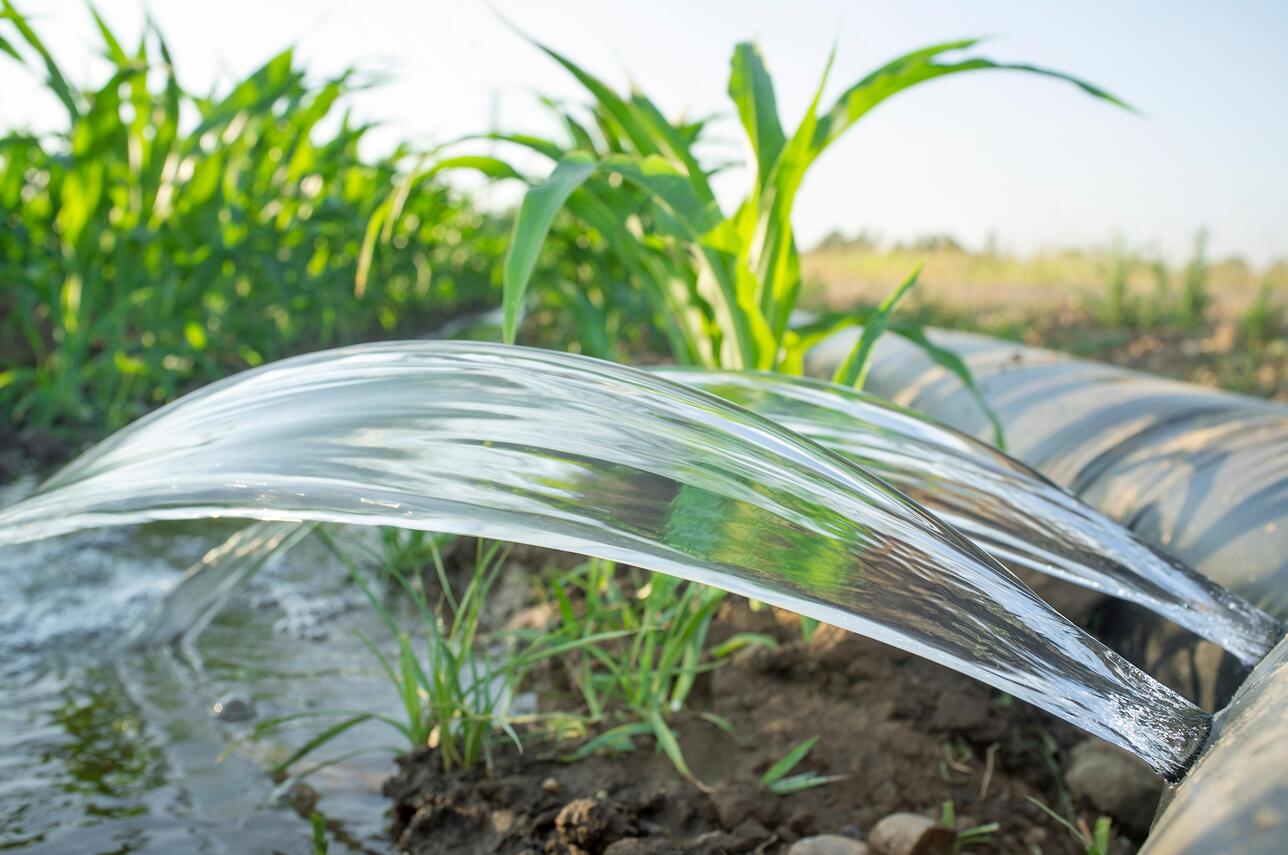Home>Gardening Tips and Tricks>Problem Solving>How Much Water Does An Irrigation System Use
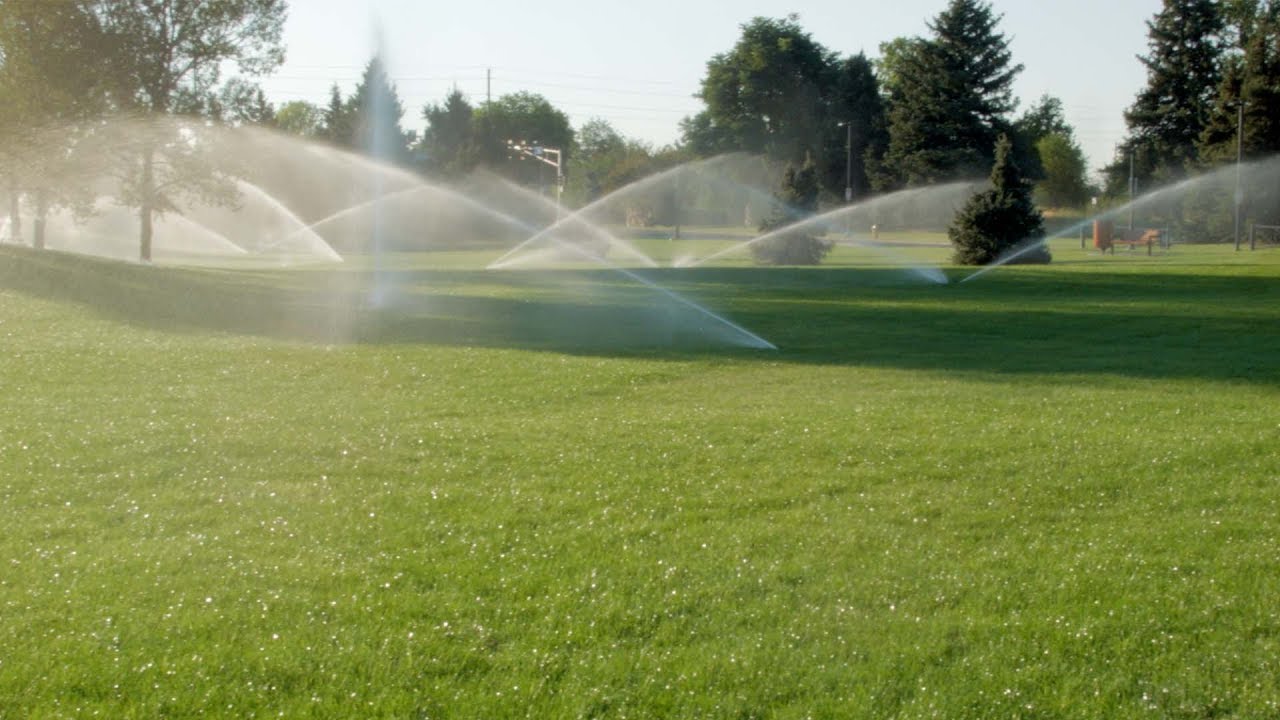

Problem Solving
How Much Water Does An Irrigation System Use
Modified: January 22, 2024
Discover the ideal solution for problem solving with your irrigation system. Learn how much water is needed and effectively manage your water usage.
(Many of the links in this article redirect to a specific reviewed product. Your purchase of these products through affiliate links helps to generate commission for Chicagolandgardening.com, at no extra cost. Learn more)
Table of Contents
Introduction
Welcome to the world of irrigation systems, where water is efficiently used to nurture landscapes and sustain agricultural activities. Whether you’re a homeowner looking to maintain a lush, green lawn or a farmer seeking to optimize crop yields, understanding how much water an irrigation system uses is crucial for efficient water management.
Irrigation systems play a vital role in delivering water to plants, preventing dehydration, and promoting healthy growth. However, it’s essential to strike the right balance between providing adequate water and avoiding excessive usage that can lead to wastage and water scarcity issues. This article will delve into the factors affecting water usage in irrigation systems and explore the different types of systems available.
With growing concerns about water scarcity and the need to conserve this precious resource, it is vital to adopt practices that promote sustainable water usage in irrigation systems. By understanding how much water an irrigation system uses and implementing efficient water management techniques, we can contribute to water conservation efforts and ensure the continued availability of water for future generations.
From drip irrigation to sprinkler systems, there are various options to choose from when it comes to irrigating your landscape or fields. However, before delving into the specifics of different irrigation systems, it’s important to understand the factors that influence water usage in these systems.
Factors such as climate, soil type, plant needs, and system design all contribute to the amount of water an irrigation system requires. By comprehending these factors, you can make informed decisions about the type of system that would be most suitable for your specific needs.
Furthermore, calculating the water usage of an irrigation system can provide valuable insights into its efficiency and allow for adjustments to be made to optimize water consumption. By considering factors such as flow rates, run times, and precipitation rates, you can determine how efficiently your system is utilizing water and make necessary improvements.
In the following sections, we will delve deeper into the different types of irrigation systems and how they impact water usage. We will also explore methods for calculating and optimizing water usage in irrigation systems. By the end of this article, you will have a solid understanding of how much water an irrigation system uses and how to ensure efficient water management.
Understanding Irrigation Systems
Irrigation systems are designed to deliver water to plants in a controlled and efficient manner. By understanding the different components and operation of irrigation systems, you can make informed decisions about which type of system best suits your needs.
At its core, an irrigation system consists of three main components: a water source, a distribution network, and emitters. The water source can be a municipal water supply, a well, a pond, or any other available water source. The distribution network comprises pipes, valves, and fittings that transport water from the source to the desired locations. Emitters, such as sprinkler heads or drip irrigation emitters, deliver water directly to the plants.
There are several types of irrigation systems, each with its own advantages and considerations. Here are some common types of irrigation systems:
1. Sprinkler Systems
Sprinkler systems are widely used in residential and commercial settings. They work by spraying water over the desired area, simulating natural rainfall. Sprinkler systems can be further classified into stationary sprinklers, oscillating sprinklers, impact sprinklers, and rotor systems, each with its own coverage area and water distribution pattern.
2. Drip Irrigation Systems
Drip irrigation systems provide water directly to the plant’s root zone, minimizing water loss due to evaporation and runoff. These systems are highly efficient and are commonly used in gardens, landscapes, and agricultural fields. Drip irrigation systems use emitters that slowly release water at a controlled rate, allowing for precise and targeted watering.
3. Surface Irrigation Systems
Surface irrigation systems rely on gravity to distribute water over the soil surface. This method is commonly used in agricultural fields and involves flooding or furrowing the soil to allow water to infiltrate. While surface irrigation systems can be relatively simple and inexpensive to install, they may be less precise in water distribution and have higher rates of water loss.
4. Subsurface Irrigation Systems
Subsurface irrigation systems involve delivering water underground, directly to the plant’s root zone. By placing water supply lines, such as porous tubes or buried pipes, below the soil surface, water is efficiently delivered to the plant’s roots. Subsurface irrigation systems can reduce water loss due to evaporation and minimize weed growth.
Understanding the different types of irrigation systems and their respective pros and cons is essential for selecting the most appropriate system for your specific needs. Factors such as the size of the area to be irrigated, soil type, plant requirements, and water availability all play a role in determining the best irrigation system for your application.
In the next section, we will explore the factors that affect water usage in irrigation systems and how to calculate the amount of water required for effective irrigation.
Factors Affecting Water Usage
Several factors influence the amount of water utilized in an irrigation system. Understanding these factors is crucial for optimizing water usage and ensuring efficient irrigation practices. Let’s dive into the key factors that affect water usage in irrigation systems:
1. Climate
The climate of an area is a significant factor in determining water requirements for irrigation. Regions with higher temperatures and lower humidity levels typically require more water to compensate for increased evaporation rates. Conversely, areas with mild climates may require less water for irrigation.
2. Soil Type
The type of soil in an area plays a vital role in water retention and drainage. Sandy soils tend to drain quickly and may require more frequent watering, while clay soils have better water-holding capacity but can experience drainage issues. Understanding your soil type can help you adjust your irrigation practices accordingly.
3. Plant Needs
The water requirements of different plants can vary significantly. Some plants, like succulents, have low water needs, while others, such as lawns or crops, require regular watering. It’s essential to consider the specific water needs of the plants in your landscape or field when determining irrigation frequency and duration.
4. System Design
The design and layout of an irrigation system can impact water usage. Factors such as pipe diameter, sprinkler type, and emitter spacing can affect water distribution patterns and efficiency. Ensuring proper design and maintenance of the irrigation system can minimize water waste and optimize water usage.
5. System Management
The management practices employed for an irrigation system can significantly impact water usage. Monitoring weather conditions, regularly inspecting and adjusting the system, and implementing smart irrigation controllers that consider factors like soil moisture levels and precipitation forecasts can help prevent overwatering and reduce unnecessary water usage.
6. Water Availability
The availability of water resources can dictate the amount of water that can be used for irrigation. In regions with limited water supplies, it is essential to prioritize efficient water management and explore alternative water sources, such as rainwater harvesting or recycled water, to meet irrigation needs.
Considering these factors and their influence on water usage in irrigation systems is crucial for ensuring sustainable water management practices. By tailoring your irrigation strategies to account for these considerations, you can minimize water waste, conserve resources, and promote healthy plant growth.
In the following sections, we will explore the different types of irrigation systems and how to calculate water usage to optimize your irrigation practices.
Types of Irrigation Systems
When it comes to irrigating your landscape or fields, there are several types of irrigation systems to choose from. Each system has its own advantages, considerations, and ideal applications. Let’s explore some of the most common types of irrigation systems:
1. Sprinkler Systems
Sprinkler systems are popular and versatile irrigation systems used in residential, commercial, and agricultural settings. They work by distributing water through sprinkler heads that spray water over a designated area. Sprinkler systems can be further categorized into different types, including stationary sprinklers, oscillating sprinklers, impact sprinklers, and rotor systems. They offer good coverage for large areas and are suitable for lawns, gardens, athletic fields, and crops.
2. Drip Irrigation Systems
Drip irrigation systems are highly efficient and water-conserving systems that deliver water directly to the plant’s root zone. They use emitters that slowly release water at a controlled rate, minimizing wastage due to evaporation and runoff. Drip irrigation systems are well-suited for gardens, landscapes, orchards, and row crops. They can be customized based on plant spacing, water requirements, and specific application needs.
3. Surface Irrigation Systems
Surface irrigation systems rely on gravity to distribute water over the soil surface. They involve flooding or furrowing the soil to allow water to infiltrate and reach the root zone. Surface irrigation systems are commonly used in large-scale agriculture and can be cost-effective. However, they may result in higher water loss due to runoff and uneven distribution, making them less suitable for slopes or uneven terrain.
4. Subsurface Irrigation Systems
Subsurface irrigation systems deliver water directly to the plant’s root zone below the soil surface. These systems involve installing water supply lines, such as porous tubes or buried pipes, that release water at or near the root zone. Subsurface irrigation minimizes water loss due to evaporation and can be advantageous for water conservation, weed control, and preventing water runoff. It is commonly used in agricultural applications, particularly for row crops.
5. Center Pivot Systems
Center pivot irrigation systems are widely used in large agricultural fields. They consist of a series of sprinklers mounted on a linear framework that rotates around a central pivot point. These systems allow for efficient watering of large areas, provide uniformity in water distribution, and reduce labor requirements. Center pivot systems are commonly used for row crops, such as corn, soybeans, and wheat.
Each irrigation system offers unique benefits and considerations. When choosing an irrigation system, consider factors such as your specific needs, water availability, landscape size, crop type, and the level of control you desire over water distribution. It’s also crucial to ensure proper system design, installation, and maintenance to maximize efficiency and effectiveness.
In the next section, we will discuss how to calculate water usage in irrigation systems to help you optimize your water consumption and promote sustainable irrigation practices.
Calculating Water Usage
Calculating the water usage of an irrigation system is essential for ensuring efficient water management and optimizing irrigation practices. By determining the amount of water needed for your specific application, you can avoid overwatering, minimize water waste, and promote healthy plant growth. Here are some key steps to help you calculate water usage in an irrigation system:
1. Determine Flow Rate
The flow rate refers to the volume of water that passes through the irrigation system per unit of time. To calculate the flow rate, you can use a flow meter, pressure gauge, or a simple measurement method known as the bucket test. The bucket test involves timing how long it takes to fill a known volume bucket with water from the system. Divide the volume of water in the bucket by the time taken to fill it to determine the flow rate.
2. Determine Run Time
The run time is the duration for which the irrigation system operates. It is essential to consider factors such as soil type, plant needs, and weather conditions when determining the appropriate run time. Ideally, the goal is to provide sufficient water for the plants without overwatering. Consider factors such as evapotranspiration rates and rainfall to adjust the run time accordingly.
3. Calculate Water Volume
To calculate the water volume used during each irrigation cycle, multiply the flow rate by the run time. This will give you the total volume of water used by the system per irrigation event. It is important to measure the flow rate and run time accurately to obtain precise calculations.
4. Adjust for Efficiency
Irrigation systems are not 100% efficient, and some water loss may occur due to factors such as evaporation, wind drift, or system inefficiencies. To account for these losses, you can apply an efficiency factor to your calculated water volume. The efficiency factor typically ranges from 0.5 to 0.9, with 0.8 being a common value, depending on the performance of your irrigation system.
5. Calculate Weekly Water Usage
To determine the weekly water usage, multiply the water volume per irrigation event by the number of times you irrigate during the week. This will give you an estimate of the total water usage for your irrigation system on a weekly basis.
By calculating water usage, you gain valuable insights into the efficiency and effectiveness of your irrigation practices. Monitoring and adjusting water usage based on calculated values can lead to more precise watering schedules, resulting in water conservation, cost savings, and improved plant health.
In the next section, we will explore the factors to consider for efficient water use in irrigation systems and highlight best practices for water conservation.
Factors to Consider for Efficient Water Use
Efficient water use in irrigation systems is crucial for conserving water, reducing waste, and promoting sustainable practices. By considering and implementing certain factors, you can optimize water usage and ensure the most effective and efficient irrigation practices. Here are key factors to consider for efficient water use:
1. Plant Water Needs
Understanding the specific water requirements of your plants is essential for efficient irrigation. Different plants have varying water needs, and it’s important to tailor your watering schedule accordingly. Consider factors such as plant type, growth stage, sunlight exposure, and prevailing weather conditions to adjust watering frequency and duration to meet their needs without overwatering.
2. Soil Moisture Levels
Monitoring soil moisture levels helps ensure that you only water when necessary. Overwatering can lead to waterlogging, nutrient leaching, and plant stress. Use soil moisture sensors or conduct manual inspections to determine when irrigation is required. This allows for more targeted watering, preventing water waste and optimizing plant health.
3. Irrigation Scheduling
Establishing a regular irrigation schedule based on plant needs and environmental factors is crucial. Avoid watering during peak evaporation times, such as midday when the sun is at its highest. Aim to water early in the morning or late in the evening when temperatures are cooler, allowing for better water absorption and reduced evaporation.
4. System Maintenance
Regular maintenance of your irrigation system ensures proper functioning and minimizes water loss. Inspect your system for leaks, damaged sprinkler heads, clogged emitters, or misaligned components. Performing routine maintenance tasks such as cleaning nozzles and replacing faulty parts will help optimize water distribution and minimize wastage.
5. Smart Irrigation Technology
Utilizing smart irrigation technology can significantly improve water use efficiency. Smart controllers use weather data, soil moisture sensors, and other factors to tailor irrigation schedules to the specific needs of your landscape. This allows for more precise watering, considering variables such as rainfall, temperature, and evapotranspiration rates.
6. Mulching
Applying organic mulch around plants helps conserve moisture by reducing evaporation and inhibiting weed growth. Mulch acts as a protective barrier, keeping the soil cool and retaining moisture, which reduces the need for frequent watering. It also enhances soil health and prevents erosion.
By considering these factors and implementing efficient water use practices, you can reduce water waste, optimize irrigation, and promote sustainable water management. Conserving water not only benefits the environment but also saves money on water bills and helps ensure the long-term availability of this vital resource.
In the next section, we will highlight some best practices for water conservation in irrigation systems that you can implement for more sustainable landscape management.
Best Practices for Water Conservation
Water conservation in irrigation systems is essential for protecting our limited water resources and promoting sustainability. By implementing these best practices, you can significantly reduce water waste and ensure the efficient use of water in your landscape or agricultural fields:
1. Use Proper Irrigation Techniques
Choose the appropriate irrigation system for your specific needs and consider factors such as plant type, soil type, and weather conditions when determining watering schedules. Implement efficient irrigation techniques such as drip irrigation or targeted sprinkler heads to minimize water waste and provide water directly to the root zone.
2. Mulch and Compost
Apply a layer of organic mulch around plants to prevent water evaporation, reduce weed growth, and improve soil moisture retention. Additionally, adding compost to the soil improves its water-holding capacity, reduces runoff, and promotes healthy plant growth.
3. Adjust for Rainfall
Monitor rainfall patterns and adjust your irrigation schedule accordingly. If a significant amount of rain falls, consider reducing or skipping irrigation to avoid overwatering. Use rain sensors or smart irrigation controllers that can automatically adjust watering based on rainfall data.
4. Regularly Inspect and Maintain Your Irrigation System
Regularly check your irrigation system for leaks, clogged sprinkler heads, or misaligned components that can lead to water wastage. Conduct routine maintenance tasks such as cleaning or replacing faulty parts to ensure optimal performance and water efficiency.
5. Utilize Smart Irrigation Technologies
Incorporate smart irrigation technologies into your system, such as weather-based controllers or soil moisture sensors. These devices use real-time data to adjust watering schedules based on plant needs, weather conditions, and soil moisture levels, resulting in more precise and efficient water usage.
6. Practice Water-Conserving Landscaping
Choose drought-tolerant plant species that require less water and have a higher tolerance for heat and dry conditions. Group plants with similar water needs together to avoid over or under watering. Additionally, create landscape designs that promote natural water infiltration and reduce runoff.
7. Monitor Water Usage and Adjust Accordingly
Regularly monitor your water usage and keep track of water bills. If you notice significant spikes in consumption, investigate for potential leaks or inefficient practices. Adjust your irrigation system settings or schedules based on the changing needs of your plants and the season.
By implementing these best practices, you can contribute to water conservation efforts, reduce water waste, and ensure the long-term sustainability of your irrigation practices. Conserving water not only benefits the environment but also saves money and promotes responsible water management for future generations.
In the next section, we will conclude our exploration of water usage in irrigation systems and summarize the key takeaways to help you optimize your irrigation practices.
Conclusion
Efficient water usage in irrigation systems is essential for sustainable water management and the preservation of our precious water resources. By understanding the factors that affect water usage, exploring different types of irrigation systems, and implementing best practices for water conservation, we can optimize our irrigation practices and contribute to a more sustainable future.
Factors such as climate, soil type, and plant needs significantly influence water usage in irrigation systems. By considering these factors, we can make informed decisions about the type of system that best suits our specific needs. From sprinkler systems to drip irrigation and surface irrigation to subsurface irrigation, there are various options available, each with its own advantages and considerations.
Calculating water usage in irrigation systems allows us to monitor efficiency, avoid overwatering, and minimize water waste. By determining flow rates, run times, and adjusting for system efficiency, we can estimate the amount of water required for effective irrigation. This information helps us optimize our watering schedules and make adjustments to promote efficient water use.
To ensure efficient water use, it is important to consider factors such as plant water needs, soil moisture levels, and irrigation scheduling. Regularly inspecting and maintaining your irrigation system, utilizing smart irrigation technology, and implementing practices like mulching and composting can further enhance water conservation efforts.
By following these best practices and adopting water-saving techniques, we can reduce water waste, save money on water bills, and contribute to a more sustainable environment. Efficient water management not only benefits our immediate surroundings but also plays a crucial role in ensuring the availability of water for future generations.
Let us strive to be responsible stewards of water resources, making conscious choices to conserve water through efficient and sustainable irrigation practices. Together, we can make a significant impact in mitigating water scarcity and promoting a greener and more sustainable world.

